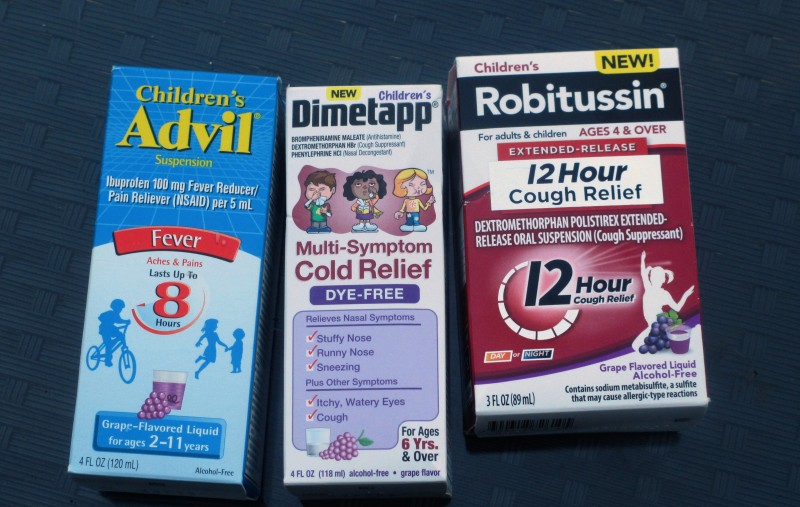
This post has been sponsored by Pfizer Consumer Healthcare. All thoughts and reviews are my own.
It’s such ironic timing that as I type this post I am battling a sore throat, body aches and headaches. Sick just got real.™ at my house! If you aren’t currently under the weather, then hopefully you can heed this advice from pediatric doctor Dr. Nina Shapiro and microbiologist Dr. Charles Gerba.
How germs impact school:
- Half of students don’t wash their hands after using the bathroom. Of those who do, many don’t use soap!
- Less than 1/3 of teachers say they regularly disinfect germ-laden objects in the classroom.
- Desks often have more bacteria than a toilet seat. If eating happens during class, the number of germs multiplies.
- Up to 2.7 MILLION bacterial cells per square inch live on common surfaces at school including desks, computer keyboards, water fountains, bus seats and cafeteria trays.
- More than 38 million school days are missed by U.S children per year due to the flu.
- Parents miss about 126 million work days annually, caring for their sick child which adds up to 40 billion lost dollars.
Germs around town:
- The Sun’s UV rays kill bacteria, so playground equipment that is left in the shade will have more bacteria than playground equipment that is hit by sunlight.
- Any microorganisms on children’s hands will transfer to any playground equipment or toys that children touch, and when other children touch the same spots they can pick the microorganisms up.
- The supermarket is a festival of “ew”! Shopping carts, credit card machines and reusable grocery bags are high-germ areas.
- Colds and respiratory infections are spread by the hands touching the nose or the eyes. 81% of people with the flu virus spread it through the air when they cough.
- Most kids touch up to 20 objects per minute an touch their face 50 times per hour – that’s a lot of germ spreading!
Pfizer Pediatric products offer solutions for parents with sick kids that can be purchased over the counter. Children’s Advil®, Children’s Robitussin® and Children’s Dimetapp® are all Pfizer Pediatric products that can help little ones who are dealing with cold, congestion or fever.
Children’s Advil® is available for kids ages 2-12 and can relieve aches and pains while reducing fever and is available in six flavors. Or Infants’ Advil® White Grape is available for use in babies 6-23 months.
When cough is the problem, Children’s Robitussin® Extended-Release 12 Hour Cough Relief is ready to help. Most Children’s Robitussin® products are for use in kids ages 4+, but some are for 6+ so watch the label carefully if you have a 4 or 5 year old.
For older kids with a cough, stuffy or runny nose, Children’s Dimetapp® Multi-Symptom Cold Relief Dye-Free is available for those ages 6+.
For me this week, I have been just focusing on taking care of myself so I can get back to feeling my best. I’ve been taking Robitussin®, drinking as much water as possible, and getting plenty of rest. I have a humidifier going and before bed I’ve been taking long, hot showers to help open up my air ways. Plus, tons of hand washing. I’m also trying to avoid touching my face or eyes, and to steer clear of touching others unless it’s truly necessary in an attempt to avoid spreading it to others.
How do you get yourself or your kids back to feeling better after getting ill? For more tips and advice visit the Sick Just Got Real™ website.
Win it: Fill out the GT form below by 11:59pm EST on 3/15/2017. Prize includes a $25 Visa gift card, Children’s Dimetapp®, Children’s Robitussin® and Children’s Advil®. Giveaway is open to the US.
Hi there! I am Emily Evert, the owner of Emily Reviews. I am 28 and live in a small town in Michigan with my boyfriend Ryan and our two pugs. I have a large family and I adore my nieces and nephews. I love reading memoirs, and learning about child development and psychology. I love watching The Game of Thrones, Teen Mom, Sister Wives and Veep. I like listening to Jason Isbell, John Prine, and other alt-country or Americana music. I created Emily Reviews as a creative outlet to share my life and the products that I love with others.
This post currently has 18 responses.
-
I like the DIY sneeze and stow tissue box…so there aren’t a million dirty, used tissues lying around everywhere!
-
I love the Sneeze & Stow Tissue Box hack! Super idea- I wonder if my hubby would use it!
-
Thanks for breaking down the options for child cold relief.
-
I learned Sick Just Got Real products do not have directions or complete warnings for adult use. There are specific Advil, Robitussin, and Dimetapp products labeled for use by adults and children 12 years of age and older.
-
The Sneeze and Stow Tissue box is a great idea. Perfect for my family.
-
I learned that I can save up to $3.50 in coupons for Dimetapp products. A little off always helps.
-
So many awesome products that my family has used for years. I found a sick hack which is called the Sick Day Dose Tracker. This is an excellent way to keep track of all of the medicines given and doses and when and what time the next dose should be. Super helpful for busy families!
-
I learned that they have a tool on their website that helps you decide which medicine may help.
-
The sick sense relief finder tool is awesome!!
-
I learned how to make a Sneeze and Stow Tissue Box, which I think is such a neat idea and something I would have never thought about! Use an empty tissue box and a full tissue box, tie or tape them together and you have a place to put your used tissues without throwing them all over the place! Thanks so very much for the chance!
-
These are the products that I have been using for years. Children’s Advil is a staple in my house.
-
I learned that you need to wash your hands, wash your hands daily and after touching things
-
I learned some tips on caring for a childs cold
-
I like the finder tool to help decide what medicine to give a child. I didn’t know that there were 3 level of advil – infants, child & junior.
-
I learned that Children’s Advil can give up to 8 hours of relief in just one dose.
-
I learned about the Sneeze and Stow tissue box, what a great idea.
-
I like the idea of the sick kit, pretty clever.
















It’s not funny but when one kid gets well another gets sick.
Thanks for the contest.